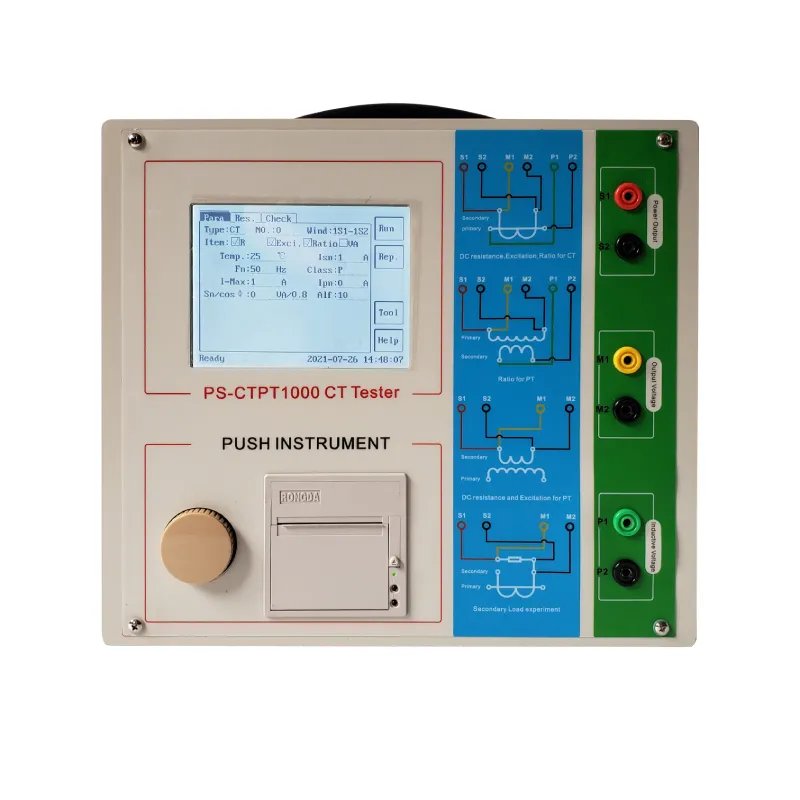 English
English


Exploring Transformer Saturation Effects Through Comprehensive Testing and Analysis Methods
Understanding the Transformer Saturation Test
The transformer saturation test is a critical assessment in the field of electrical engineering that aims to evaluate the performance and efficiency of transformers under different operational conditions. Transformer saturation refers to a phenomenon where the magnetic core of the transformer becomes saturated, leading to a significant change in the transformer's inductance characteristics. This test is essential for the design, operation, and maintenance of transformers, providing invaluable insights into their behavior during extreme scenarios.
The Importance of Transformer Saturation
Transformers are vital components in electrical power systems, facilitating the transfer of electrical energy between circuits while adjusting voltage levels. When a transformer operates within its designed specifications, it effectively steps up or steps down voltage while maintaining efficiency. However, under certain conditions, such as overvoltage or excessive current, the core can reach saturation. This saturation results in a nonlinear response, causing the transformer's operation to deviate from its intended design, potentially leading to overheating, increased losses, and even failure.
Conducting the Saturation Test
The transformer saturation test involves subjecting the transformer to a controlled increase in voltage while monitoring the current flow. The process typically begins with the application of a low voltage, progressively increasing it until the magnetic core saturates. By plotting the relationship between applied voltage and current, engineers generate a voltage-current (V-I) curve. The characteristics of this curve provide critical information regarding the transformer's operational limits and its performance under varying loads.
Key parameters evaluated during the test include
transformer saturation test

1. Magnetizing Current This is the current that flows through the transformer when no load is connected. In a saturated core, the magnetizing current increases dramatically, indicating significant core losses. 2. Saturation Point This is the specific voltage level at which the core no longer effectively increases in magnetization despite further increases in voltage. Understanding this point is crucial for ensuring safe operating limits.
3. Hysteresis Losses As the transformer core undergoes cycles of magnetization and demagnetization, energy losses occur due to hysteresis. These losses contribute to overall inefficiency and overheating during operations.
Practical Applications
The results obtained from transformer saturation tests are instrumental for various applications in the electrical engineering field. Engineers utilize this data to design transformers that are resistant to saturation, thereby enhancing their efficiency and longevity. Additionally, the test outcomes help in diagnosing issues within existing transformers, allowing for timely maintenance or replacement before catastrophic failures occur.
Moreover, understanding transformer saturation is crucial for implementing protection schemes within power systems. By knowing the saturation characteristics, engineers can design relays and circuit breakers that provide adequate protection against overloading conditions, thereby ensuring the stability of the electrical grid.
Conclusion
In conclusion, the transformer saturation test is an essential tool for assessing and ensuring the reliability of transformers in electrical systems. By analyzing the behavior of transformers under saturation conditions, engineers can make informed decisions regarding design, operation, and maintenance. As the demand for efficient and reliable electrical systems continues to grow, understanding transformer saturation will remain a pivotal aspect of electrical engineering, contributing to advancements in technology and system performance.
-
Differences between open cup flash point tester and closed cup flash point testerNewsOct.31,2024
-
The Reliable Load Tap ChangerNewsOct.23,2024
-
The Essential Guide to Hipot TestersNewsOct.23,2024
-
The Digital Insulation TesterNewsOct.23,2024
-
The Best Earth Loop Impedance Tester for SaleNewsOct.23,2024
-
Tan Delta Tester--The Essential Tool for Electrical Insulation TestingNewsOct.23,2024





